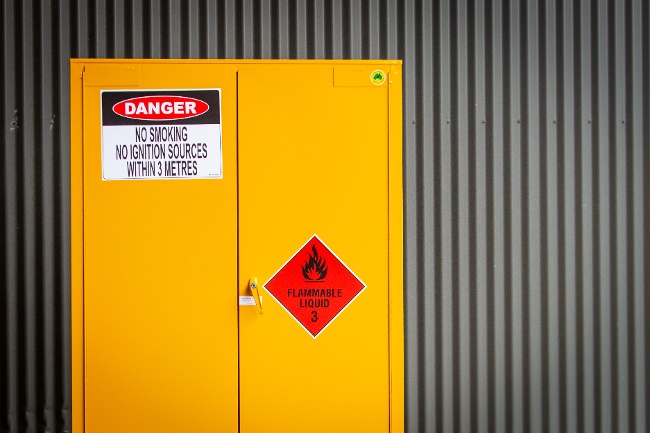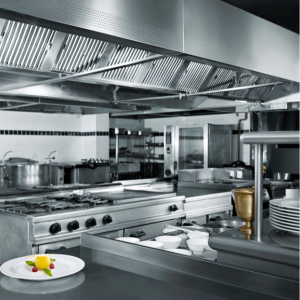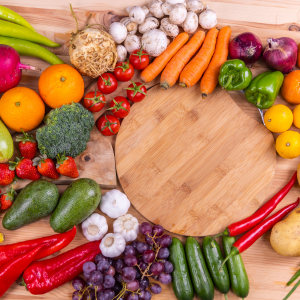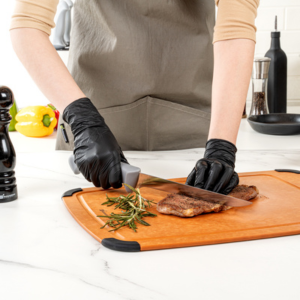Hazardous chemicals and dangerous goods can destroy health, cause severe injury, harm the environment and damage property unless they aren't handled properly. If you’re preparing to implement chemical handling training in your workplace, there are many key topics to cover. You must also consider the format of chemical handling training sessions, so you can provide the best education experience for your staff.
In this post, we offer a 6 step guide to providing effective chemical handling training in the workplace, so you can provide an optimum environment for staff who manage the risks of Hazchem and dangerous goods.
Chemical Handling Training
Training on the safe handling of chemicals is key for any teams who work with, supply, or store hazardous materials. This protects your people, as well as your organization, community and environment.
As part of your risk management strategy, arming your staff with the proper education about safe chemical training will not only decrease risk and improve efficiency in your operations, but it will assist in maintaining compliance.
To better prepare your team for ensuring chemical safety in the workplace, we have developed some key points to cover when you're creating dangerous goods and hazardous chemical handling courses for your staff.
Consider the following safety topics when conducting chemical handling training for your hazardous chemicals and dangerous goods.
Educate your Team about Personal Protective Equipment (PPE)
When working with hazardous chemicals or dangerous goods, personal protective equipment (PPE) is a requirement. Equipment must be suitable for the chemical, the task and the staff member, and it must be kept in good condition to ensure safety.
Educate your employees on selecting the correct PPE (personal protective equipment) to use when handling different chemicals. For example, the equipment for corrosive substances will be different to the equipment required when handling toxic chemicals.
Required PPE may include protective clothing, gloves, footwear, facemasks, respirators and goggles.
This task is made simpler when workplaces use dedicated PPE Cabinets to provide tjhe correct personal protective equipment for that particular worker and task. The location of personal protective equipment in designated, well-identified storage areas, is required safety information for workplaces, as per the Australian Standards.
Not only should staff be trained in how to select the correct personal protective equipment for that chemical and task, they must also be trained in how to put on, take off and maintain the equipment so there is no risk of chemical exposure.

PPE should only be selected after all hazards of a specific chemical or task have been identified.
Safety equipment also needs to be comfortable to prevent incidents from occurring. For example, if touch sensitivity is essential for a task, textured and thin gloves are required to ensure agile movement.
Train Staff in Safe Chemical Handling Practices
Each chemical used within your organization should have a specific procedure for safe handling. Ensure all employees are familiar with these procedures by providing training and refresher courses, as well as competent supervision of work tasks.Essential aspects of safe handling practices are:
Educate Staff on the Globally Harmonized System of Classifying and Labelling Chemicals (GHS)
GHS labelling for primary and secondary containers is mandatory in most Australian states. The GHS provides a universal standard for the labelling of hazardous goods, and includes information on chemical hazards, as well as storage instructions, placards, and Safety Data Sheets (SDS).

Chemical labels must adhere to GHS labelling guidelines.
Manufacturers and suppliers should always have the correct GHS labelling on hazardous goods, so it’s important to ensure everyone understands how to read GHS labels, and is familiar with the requirements for labelling.
Train Staff to Store Dangerous Goods Safely
One of the key ways to reduce risk with chemicals, is understanding where and how to store your Hazchem and dangerous goods. There are many chemical hazards that require a controlled storage environment to mitigate risk, whether it's flammable chemicals, corrosive substances, explosive goods or oxidizing agents.
Some chemicals can pose serious hazards if they come into contact with, or are stored with, one another. Therefore, dedicated storage for each class or division of dangerous goods is an important part of the risk management process.

Staff must be trained to understand storage requirements, such as flammable cabinets must be seperated from ignition sources, incompatible substances and must only store Class 3 Flammable Liquids.
Staff should be thoroughly trained on best practice for chemical storage, including what stores or cabinets to house particular goods, the proper housekeeping requirements for that store, how to identify and action any possible hazards (such as combustibles left near a flammable cabinet), how to inspect containers to ensure they are fit-for-purpose and not leaking or cracking, and how to interpret the dangerous goods and hazard signage in the storage area.
Storage information can be found on each chemical’s Safety Data Sheet, but choosing equipment that is made to Australian Standards offers specific controls required for that class or division of chemicals. Always familiarise your team with the correct storage procedures, and keep the SDS close to the store so staff have easy access.
Consider the Transport of Dangerous Goods
Whether you’re transporting hazardous materials within a work site, or between worksites, it’s essential that your team is familiar with the state or territory regulations.
Each Australian state or territory has different regulations, including no-go transport zones where chemicals can’t be transported, and specific transport documentation requirements. Be sure to contact your local transport regulator to understand your state’s requirements - and relay this information to your team.

Beware of flammable liquids and their flash points.
There are also key elements to be aware of when transporting dangerous goods, including the flash points of flammable liquids, the storage temperatures of goods, and the transportation of goods on work sites. Incorporate these into your training so that your team knows what to keep in mind when moving chemicals in and around the workplace.
Educate Staff on Risk Management Policies and Practices
As part of the Australian Model Work Health and Safety Regulations, businesses have specific duties to manage risks associated with chemicals in the workplace. This means having clear risk management policies and processes in place.
Your team should be trained on all procedures and policies, including:
- Emergency plans if any unexpected accidents or reactions occur
- Information on where fire safety and first aid equipment is stored
- The correct way to decommission any chemical storage or handling systems
- Spill containment systems for hazardous chemicals
- How to assess risk surrounding dangerous goods
Tips for Your Chemical Handling Training Presentation
There are further considerations when training staff to ensure they are engaged with your course content. Consider the following tips when training your team in chemical handling procedures.
Include a Variety of Training Materials
It’s a common saying that we remember 10% of what we read, 50% of what we see, and 80% of what we experience through practice – so the more practical elements you include in your training, the more effective it will be.
Incorporate roleplaying into your training to reinforce any policies or procedures, show videos to illustrate the risks associated with different chemicals, or use eLearning materials to test knowledge. The more varied your training, the better!

Training your team includes providing an engaging environment where they are equipped to learn.
Use Real-life Examples
Keep your chemical handling training relevant to your audience and use examples that they can relate to. This means highlighting the hazards of chemicals commonly handled in your workplace, and outlining policies and procedures for situations that your team are most likely to come across on the worksite.
Provide Tools and Ongoing Training
There’s a lot to remember when it comes to the safe handling of chemicals, and sometimes one training just isn’t enough.
Equip your team with all the resources they need to find information on chemical handling, such as the Safe Work Australia website for hazardous chemicals, or the Hazardous Chemical Information System database where they can quickly find information on which chemicals are hazardous and any safety information that already exists.
Also schedule in annual or biannual refresher trainings, and have induction trainings in place for any new team members.
Handling Chemicals Safely
As we've highlighted in this post, there are many topics and considerations to cover when developing a chemical handling training course for your organisation. While training will be unique for your site, including your work processes, hazards and volume of chemicals, it's vital that staff are trained (and re-trained) in a way that offers optimum protection for people, property and the environment. Training is part of the risk management process, and can greatly improve safety and compliance in your operations.
If you want to help correctly assess the hazards and risks associated with different dangerous goods, you can access our free chemical risk assessment template. This template will help you accurately identify hazards in your workplace, so you can work towards creating and sustaining a safer work environment. Get your free template pack today.














%20(1).jpeg)



